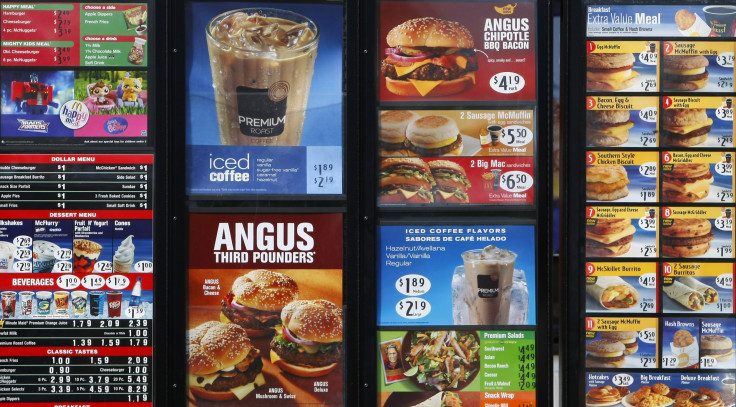Restaurant Chains Cut Calories: 2013's New Menu Items Had 12% Fewer Calories Than 2012's New Offerings, Study Finds

The nation’s top fast-food and restaurant chains are watching out for their customer’s waistlines. A study by the Johns Hopkins Bloomberg School of Public Health found that new menu items introduced by major chains in 2013 contained an average of 60 fewer calories than those introduced in 2012.
Using Menustat data, researchers studied new menu items from 66 of the United States’ top 100 largest restaurant chains, the Washington Post notes. The calorie reduction in the 2013 offerings – which contain 12 percent fewer calories than menu items from 2012 – could noticeably impact America’s problem with obesity, said Dr. Sara N. Bleich, an associate professor in the Department of Health Policy and Management at the Bloomberg School and the study’s lead author. “If the average number of calories consumed at each visit was reduced by approximately 60 calories -- the average decline we observed in newly introduced menus in our study -- the impact on obesity could be significant,” she said.
The voluntary introduction of healthier dishes comes in advance of new federal regulations under the Affordable Care Act that will require chain restaurants to include exact calorie counts for all menu items. Some cities, such as New York and Washington, D.C., have already implemented their own laws on the issue.
“You can’t prohibit people from eating fast food, but offering consumers lower calorie options at chain restaurants may help reduce caloric intake without asking the individual to change their behavior – a very difficult thing to do,” Bleich said. “Given that the federal menu-labeling provisions outlined in the 2010 Affordable Care Act are not yet in effect, this voluntary action by large chain restaurants to offer lower calorie menu options may indicate a trend toward increased transparency of nutritional information, which could have a significant impact on obesity and the public’s health.”
But the study, which appears in the October issue of the American Journal of Preventative Medicine, found that most new reduced-calorie offerings were auxiliary menu options like salads. By and large, restaurant chains are not offering healthier versions of their signature dishes.
"Because these are some of the largest chains in the country, from a revenue perspective, chances are many of them have been impacted by the local regulations. That transparency has pushed them to think more carefully as they introduce new menu items, as they do every year with fewer calories,” she said. "It's just so shocking to consumers when they see these numbers, if they see a salad has 900 calories.”
Previous studies have said that 36 percent of adults and 41 percent of adolescents eat at fast-food restaurants on a daily basis. An excess of just 100 to 150 calories per person per day can lead to obesity.
© Copyright IBTimes 2024. All rights reserved.





















